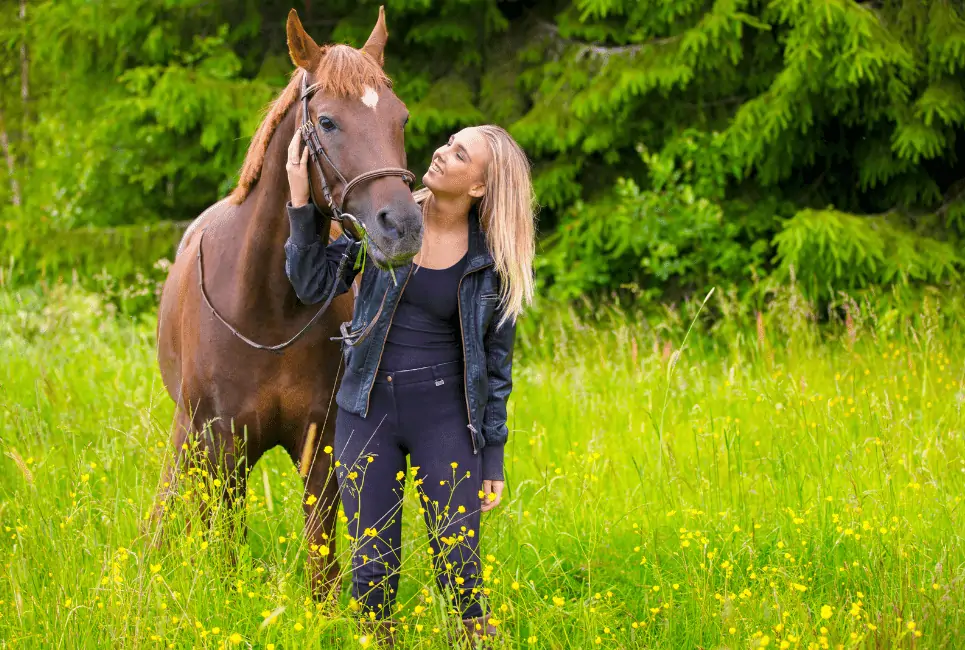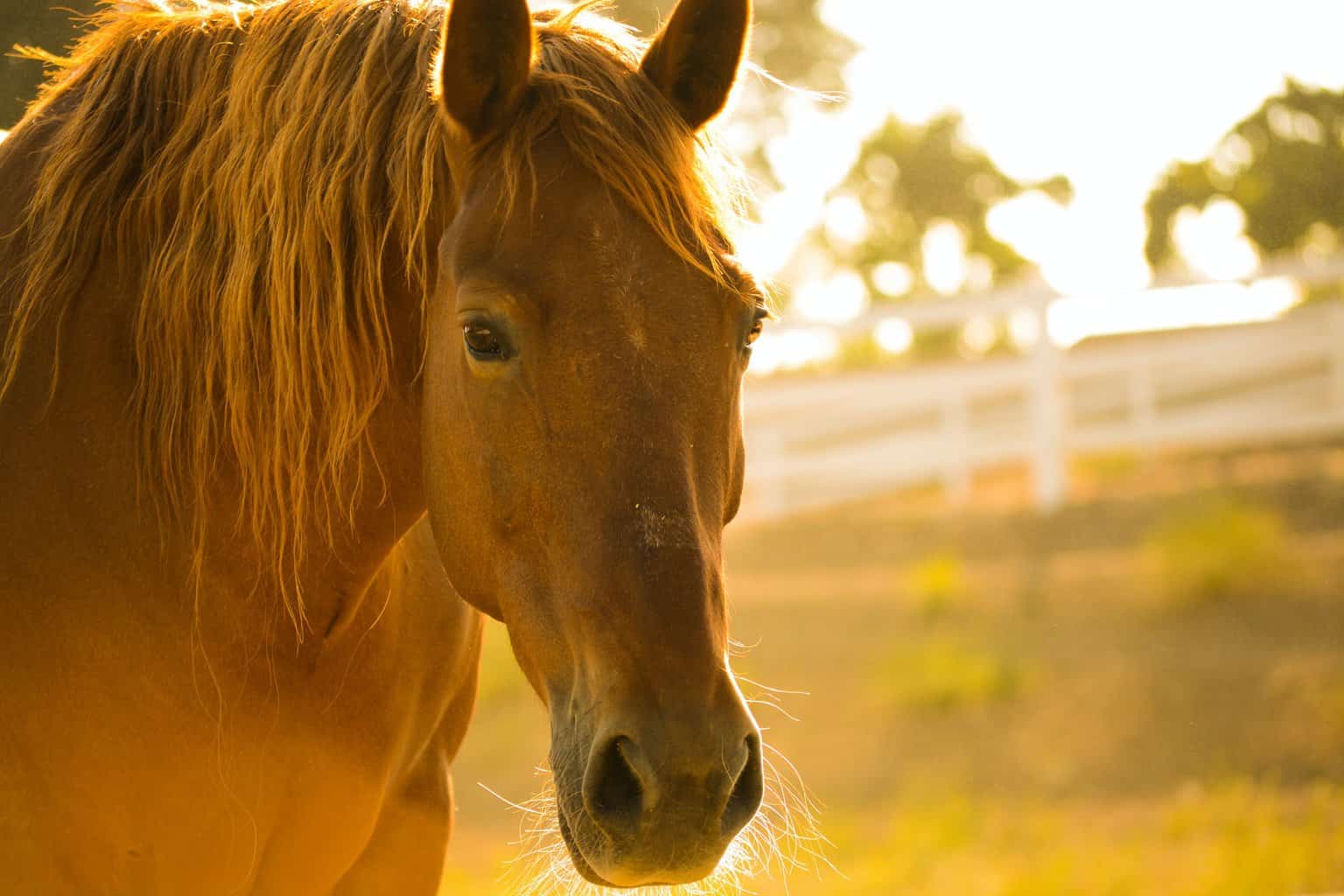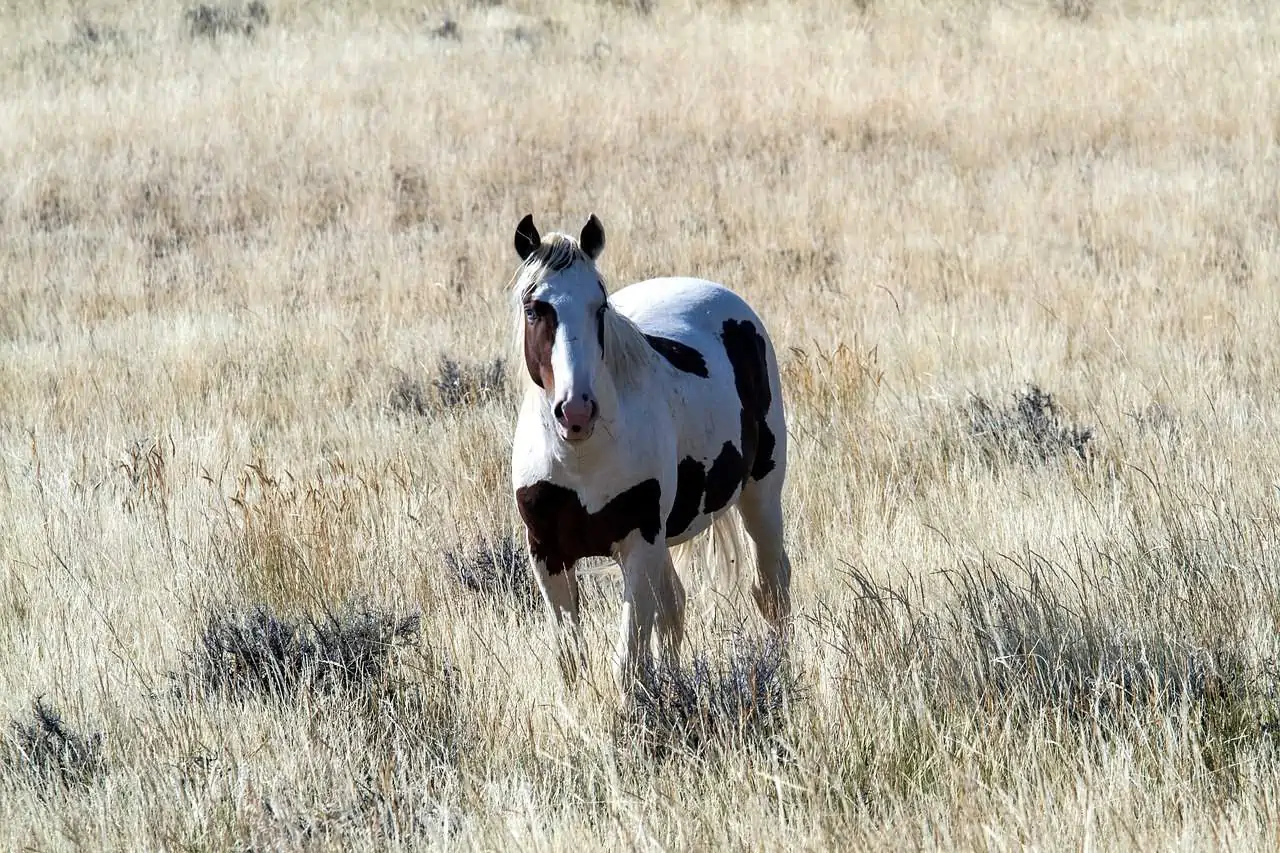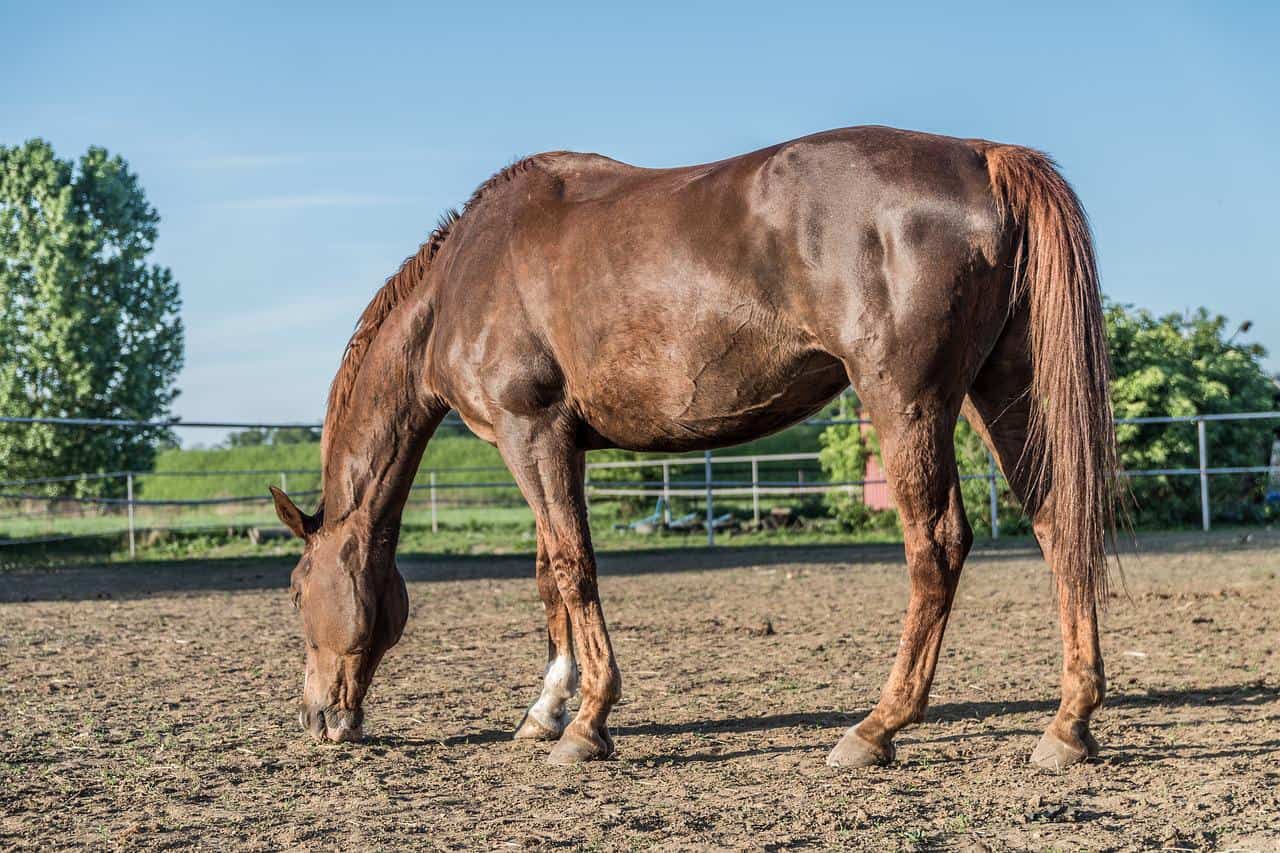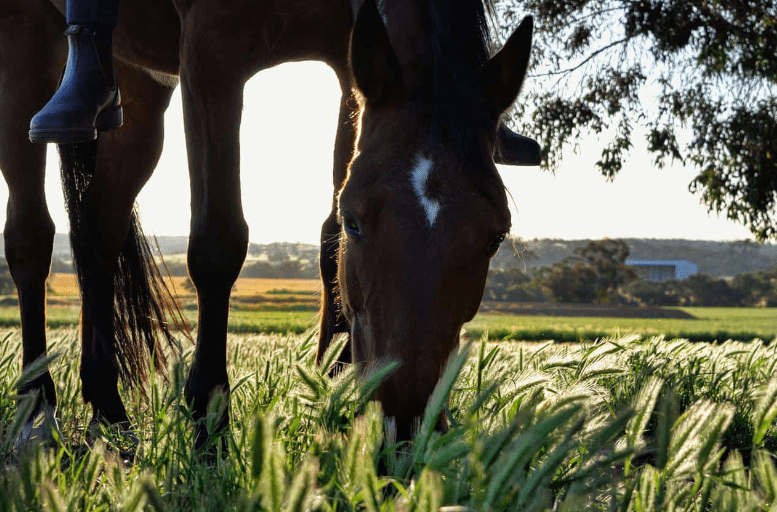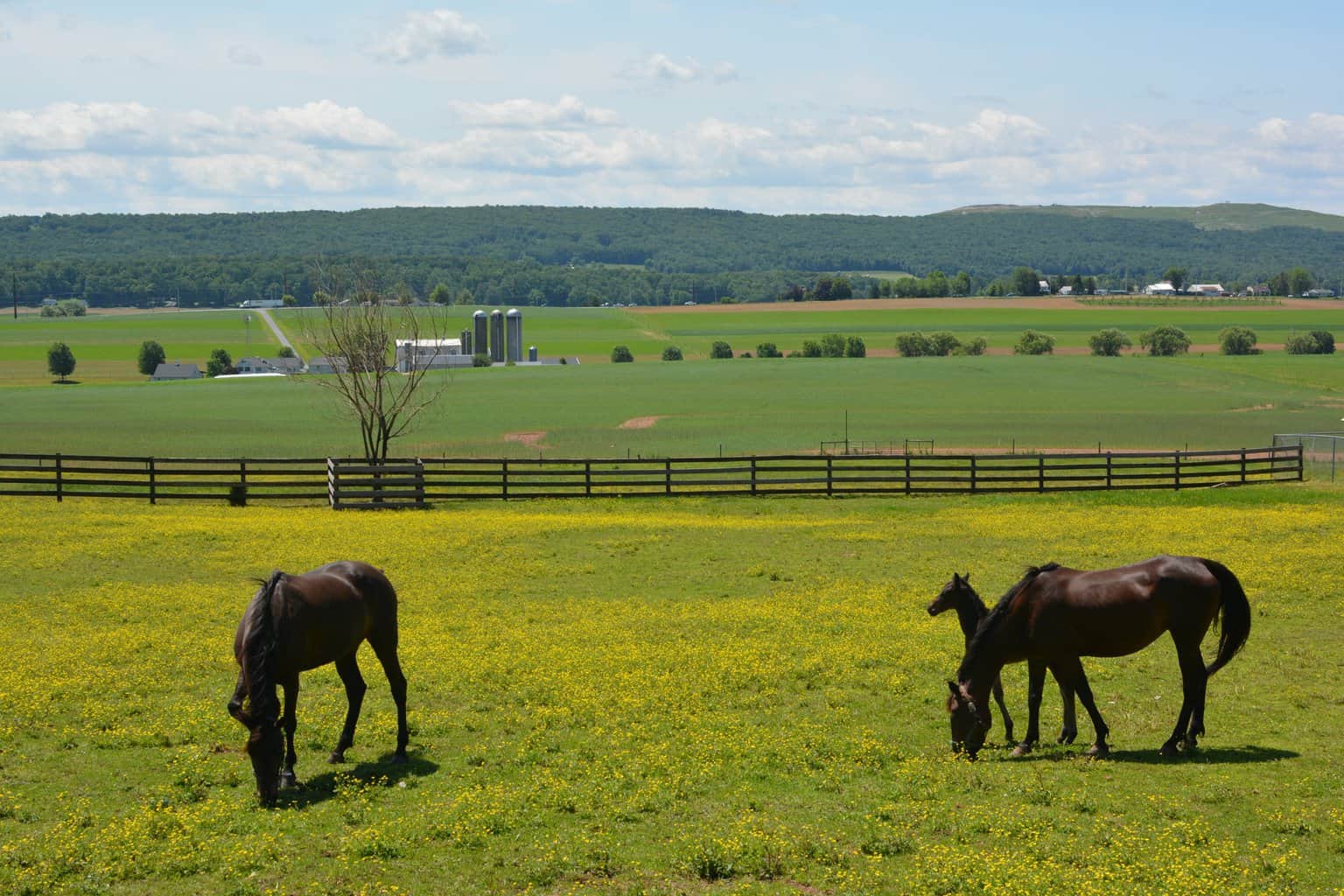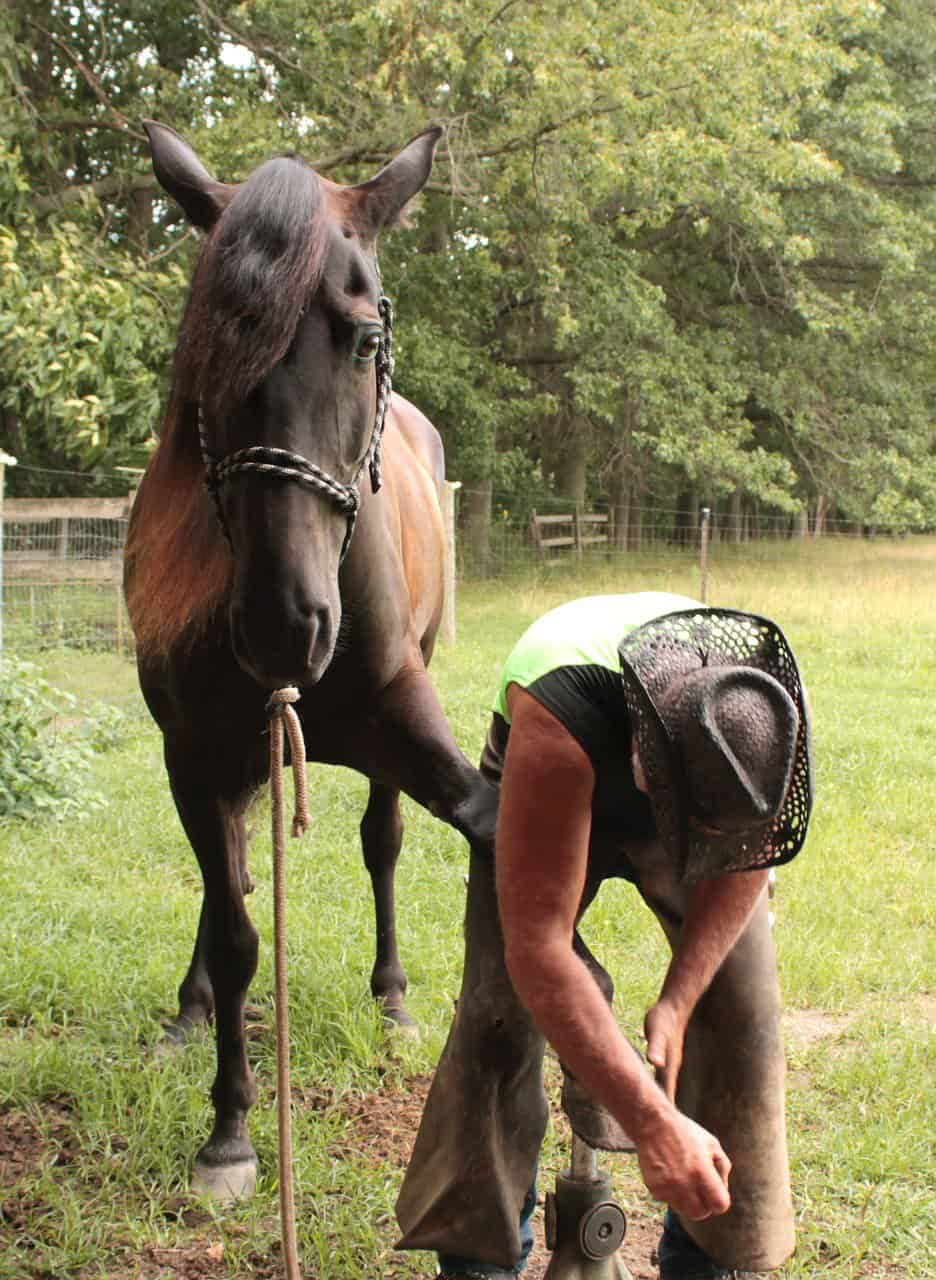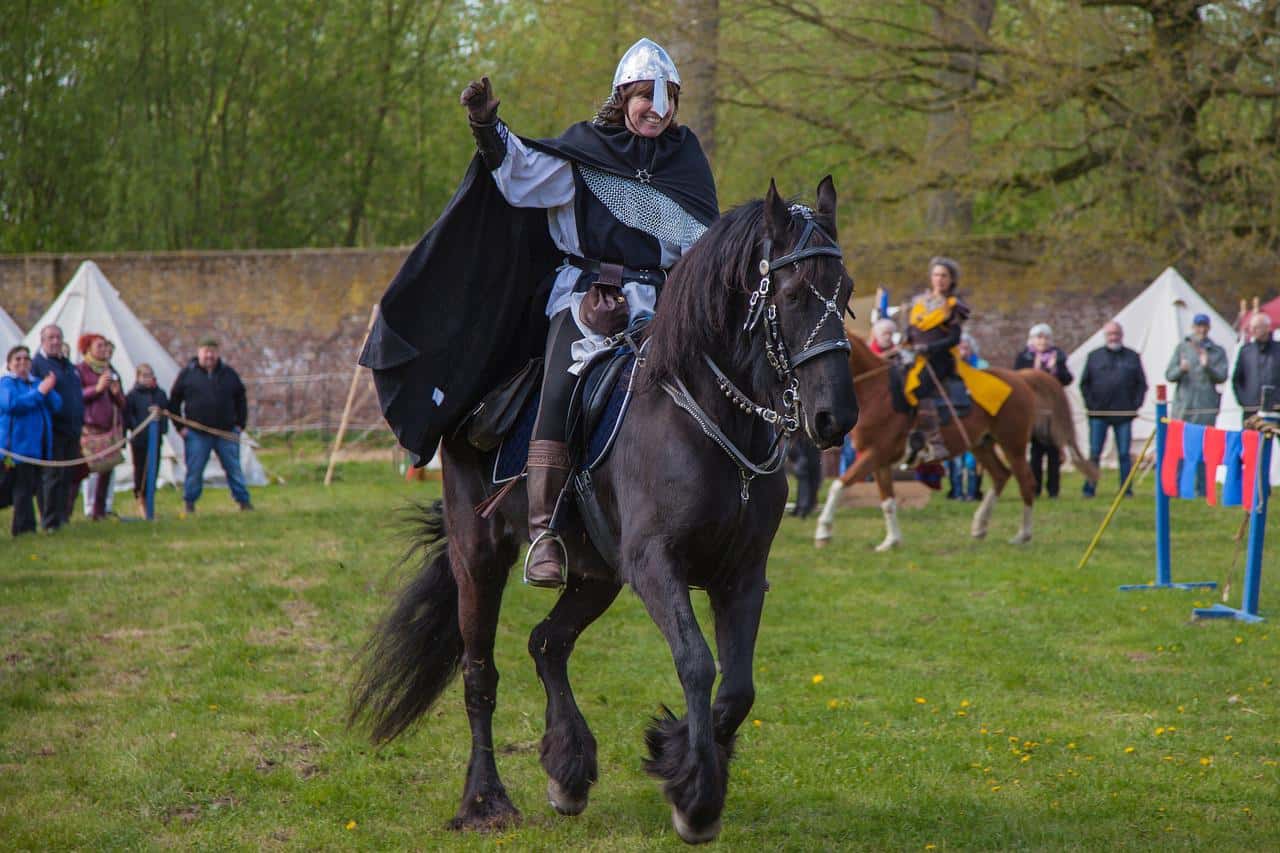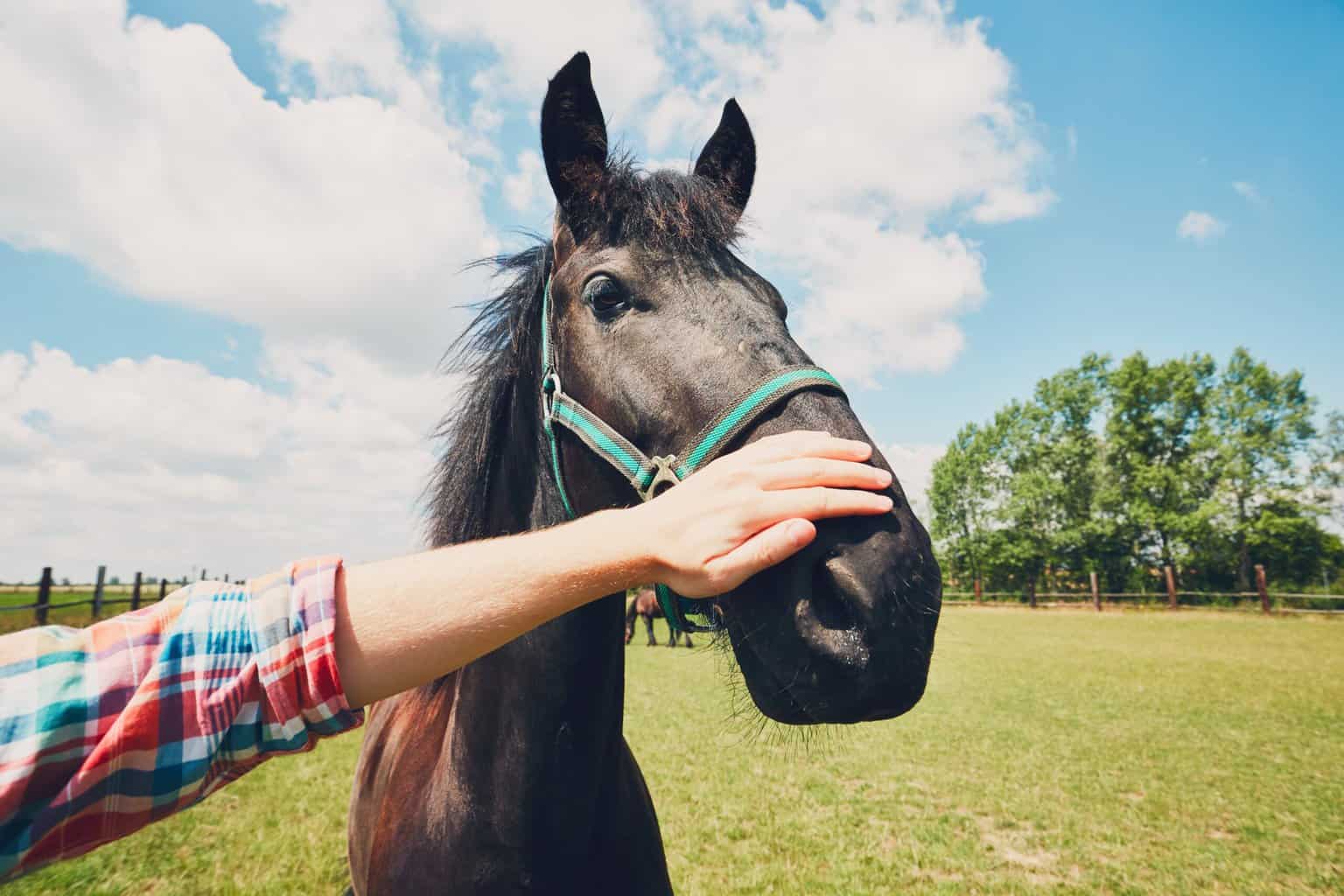- Best Horse Show Halters Guide - July 13, 2022
- Best Bareback Pads Guide - July 5, 2022
- Best Western Bitless Bridle Guide - July 3, 2022
Now here’s a complicated question! How much does a horse cost? We’ve all heard that horses are expensive, yet it seems as though folks in all walks can own a horse if they put their mind to it. Which one is it? Well, it’s both. Horses tend to take as much money as you have available. The saying goes, “I used to have money, and now I have horses.“
While you may choose to have your dog as the center of your universe, it’s not necessarily a requirement for being a dog owner. Owning horses isn’t the same as owning other animals or having other hobbies; it is an entire way of life. Part of this is due to their inherent expense and the land they require. There is no choice; if you own a horse and are not excessively wealthy, it will change your life.
TL:DR: How Much Is a Horse
There are free horses, and there are horses that cost more than most houses, but the average cost for a horse is $3000. This average shows that most horse owners are not inherently wealthy because wealthy people pay much more for their horses. Horses with excellent breeding, accomplishments, or training will all cost much more.
Don’t crack out your wallet just yet. The average upkeep for a horse is almost $4000 annually. It costs more, on average, to house and feed your horse in the first year than the horse itself costs. Horses require hay, land, housing, and vet visits. These are basic requirements and don’t include transportation, supplements, tack, fencing, or farriers.
The Cost of a Free Horse
Besides standard upkeep, a free horse can quickly become a burden. There is always a reason that a horse is free. It may be a senior, have hidden health issues, lame, or even be dangerous. It’s not that you shouldn’t pick up a free horse; it’s that you should be aware that their upkeep costs may be much higher than a horse with a price tag.
An under-trained or under-handled horse might be free, such as a wild mustang or an unstarted colt or filly horse. However, these horses will take hundreds of hours to become trustworthy and rideable.
You will also need a high level of expertise to handle this process without incurring hospital bills and the rest of their upkeep and potentially ruining the horse. If you are decided to train a horse on your own and are committed to learning the process, why not try a free horse?
Many wonderful free senior horses are being passed around as beginner-friendly options, trail horses, and therapy horses. Beginners will use a senior horse until they advance on to a more difficult prospect, often passing the horse along to the next beginner.
These horses can have more health issues than younger beginner-friendly horses, so it can be a roll of the dice financially trying this method for your beginner equestrian.
The worst of all, the free horses are the ones with undisclosed health issues or lameness. Why someone would withhold this information if they were giving the horse away for free is beyond me. There is a chance they didn’t know, but more often than not, they did and just needed to unload the horse quickly.
Horse traders can be the worst, even those that give some horses away for free. Unless you are willing to do the same to the next person, you may end up with a mountain of vet bills. In the worst case, you must have the horse euthanized after your family has become attached to it.
Be careful with free horses! The saying is, “don’t look a gift horse in the mouth.” People often think this phrase refers to the Trojan War, but it refers to the common practice of checking a horse’s teeth for age and health. Maybe there were fewer consequences to receiving a problematic gift horse in the past, but in modern times, I would suggest you “definitely look a gift horse in the mouth.”
The Solid Trail Horse
While any horse can be taken on a trail, you’re going to have a better time on some than others. The majority of prospective buyers in America are looking for trail horses. We have long, beautiful trail systems in America, and riding them is as much tradition as horses themselves. The average price for a trail horse is $3000, the same as the average price for a horse in general.
I highly suggest you ask to take your prospective horse on a trail before writing a check. You can easily assess other types of horses from a video or a relatively short ride around a ring, but trail soundness needs to be experienced on a trail. A horse may be totally fine with ring distractions but unable to cross a creek or bridge.
The horse may be impossible to move to go away from the barn but pull the entire way back. I’ve even known horses that don’t start bucking until several miles in, knowing that if they wait, they will likely get to return to the barn sans rider. A million issues can crop up on the trail, yet almost every seller says their horse is a trail horse.
Shopping for an endurance trail horse is an entirely different adventure, with higher price points and more complex considerations.
The Prospect: An Untrained Horse
A prospect horse is a young horse with little training that you may be considering for a particular discipline. In some disciplines, like dressage, “prospect” can be a much more complicated term with more training. Still, it simply means the seller thinks that the horse will excel at a discipline for most disciplines.
Prospects generally have specific breeding to make sellers think this way. They are also old enough to confirm their size, strength, and temperament.
It will take a good amount of experience in your discipline to consider a prospect. Many have not yet even been started under saddle, and if they were started, they were not trained into a discipline. They are not for beginners and should only be considered if you know how to shop for a horse.
Each breed has a different average cost for its horses, but a prospect is among the least expensive horses of the breed. If you spend the time doing your research and are comfortable training your discipline, a prospect is a wonderful way to save some money and end up with exactly the horse you want. Humans get over their heads with untrained but well-bred horses all of the time. It can be difficult to unload them once they do, meaning they’ll be less expensive.
Remember, do your research with prospects or get burned. The word “prospect” might be a horse salesman’s favorite lie. I remember my first barrel racing “prospect.” He was a young buckskin Quarter Horse stallion I bought at auction for $500 without my parent’s permission or knowledge.
I knew we would be the next big thing out of the East Coast, and I was ready to put in all the work to make it happen. That colt never grew past 14hands! I hadn’t done enough research on the parents, and I ended up training him into a hunter pony for a friend’s riding program down the road.
The Show Pony: a Well-Trained Horse
Now here’s where we start talking money. A proven horse can be as expensive as its discipline and breed allow. We already talked about the average price of a horse is around $3000, but did you know the median price of a horse is only around $2000.
This means that a small amount of very expensive horses are skewing the data. These horses are fully-trained and accomplished athletes. You can spend more than most houses on an accomplished show horse.
You don’t have to spend a small fortune on a show horse, but you can spend a small fortune on a show horse. There are plenty of horses out there that are not seeing anywhere close to their full potential with their current riders, and it will be a great deal for you.
My best barrel horse was running a full second slower than her previous owners. Her previous owners were trainers and skilled riders. Horses and owners fit together like best friends; no two pairings are the same.
What’s important, especially when paying for a show horse, is that you’re able to ride them before purchase. Ideally, you would enter them in the same classes they are being advertised for. Never expect them to be able to perform as well as they have with their previous owners at this stage, but you should get a feel for their abilities and how well they fit your riding style.
Upkeep Costs
It is easy to get over your head with a horse. Few other hobbies cost so much to maintain after your initial investment. In fact, the cost of a horse is nowhere near its lifetime expenses.
The horse’s purchase price will probably be even less than its annual expenses. The average cost of a horse in the United States is $3000, while the average annual cost of upkeep for a horse in the United States is just under $4000.
So, where does all that money go? Let’s get into it.
Food
Horses have to eat, and you’ll be the one feeding them. It is possible for your horses to maintain a healthy weight on grass alone but unlikely if you speak to most horse owners. In the spring and summer, you may save some money on hay and grain, but there may be nothing left for your horses to eat in the winter. Of course, this is very dependent on climate and how much land is available for your horses to graze.
If you’ve ever been to Puerto Rico, you may have noticed what tourists think of as wild horses roaming the streets and beaches. They are usually owned horses that are allowed to free graze without fences or boundaries. When the owners are ready to ride them, they simply go out, find them and throw a halter on. The combination of an evergreen climate and unlimited land to graze means that there is no need to feed hay or grain.
You’re probably not in Puerto Rico. You likely need to fence your horses in and may experience harsh winters. This means you’ll at least be spending $60 – $100 per month on hay and supplements when your pasture can’t support its horses without help. You will spend even more money if you decide to feed grain. The more you work your horse, the more you have to supplement its calorie intake with both hay and grain.
Make sure to consult your veterinarian about the appropriate feeding schedule for your horse. We do a ridiculous amount of damage to our horses by overfeeding them, which is caused by feeding too many calories for their workload. I’ve owned horses that I could never feed grain because they would quickly become overweight.
Others needed a scoop after a long day of work. It is much more difficult to overdo it with hay than it is with grain, but it’s still possible. Some horses may even become overweight on only fresh spring grass and must wear caps to limit their intake.
These considerations will make your food costs extremely variable. For an active, high metabolism horse in a small paddock in an area with long winters, you could easily be averaging $200-$300 a month on grain, hay, and supplements. For a sedentary, slow metabolism horse with a lot of acreage and mild winters, you may only buy $300 worth of hay a year or none at all.
Lodging On-Site: a Horse Farm!
Lodging has a reciprocal relationship with food. A horse with a ton of pasture to eat and a warm, dry stable to help prevent excess calorie burn will eat less than a horse with a small paddock and inadequate protection from the elements. We may not be able to control how much land we can afford, but do yourself a favor and build a cover or barn.
According to the 2020 United States census bureau statistics, farmland averages around $4000 per acre. This number varies drastically depending on the area you choose to own horses.
It is worth mentioning that most states have affordable farmland (even New York and California!), but you will need to move your homestead outside of congested areas if you’d like to keep horses on your own property and were not born a Rockefeller.
The amount of land you’ll need for each horse will also depend on the climate you’re looking to buy in. For a moderate four seasons location, two acres should be enough forage for each horse. I’d always suggest buying as much land as you can afford.
Horses tend to make us wish we had just a few more acres. You may want a ring, an extra barn, or that flashy colt that isn’t being bid on at auction. Horse people always take an empty trailer to an auction, even when they’re very sure they don’t want another horse.
There is a surprise cost to your acreage if the farm is not already set up for horses. Fencing, especially wood or vinyl, can be more expensive than the land you purchased to put it on. The average cost for wooden fencing on 10 acres is $20,000. You may decide to go with wire for most of your ranch, as the average cost of wire or electric fencing for 10 acres is $4000.
The decision is up to you, but there is a reason wooden and vinyl fencing is preferred, even though they are four times as expensive as electric or wire.
Injuries on a wire fence can cost you thousands of dollars at the vet. Potential security breaches on electric fencing could cost you the whole farm in a car accident. In fact, many stables with a lot to lose (or stallions on the property) have a wooden perimeter fence and their pasture and paddock fencing.
Last will be your horse house. This may be anything from a small run-in shed to block the elements, all the way to a heated and air-conditioned horse mansion with human servant live-in quarters. Buying a property with a barn already built is a great idea, but make sure to have it inspected, same as the house. You may end up with more expense than value on your hands if the barn has seen its last good years. `
Expect to pay around $10,000 on an excellent run-in shed, including labor. These are often pre-fab kits, and you could even consider doing the work yourself. A large pre-fab metal barn will average $50,000, but you probably shouldn’t consider trying to put one of these up yourself.
For the picture-perfect horse farm, a large wooden, custom-built barn will cost $150,000 or more. You’ll also need to consider the utilities you may want to run into the cost of building your barn.
Boarding and Leasing
If you’d like to make all of the above projects someone else’s problem, consider boarding or leasing a horse. Boarding a horse is renting a spot for a horse that you own on someone else’s property. Leasing a horse is renting someone else’s horse that usually stays on their property.
Not only do the costs vary by region, but contracts may be different depending on your needs. For instance, you may lease a horse for only two days a week if that suits you best, or you may board a horse but not require a spot in the stable for them.
For full boarding, which includes feeding, stall cleaning, and pasture turnout, you can pay around $20/day or $600 a month. If you can care for the horse yourself and supply your own food, you can get these costs down to around $5 a day or $150 a month.
Lease fees are calculated differently and may or may not include the horse’s boarding. The rule of thumb for a lease fee is to charge %25-%30 of the horse’s assessed value a year. For a $10,000 horse, an average lease fee would be $2500 annually. You may be charged boarding costs outside of this lease fee, but they are typically lower than boarding your own horse at the same stable.
Veterinarians
A healthy horse can expect around $400 a year in vet bills. This number will include their standard check-ups, vaccinations, and routine tests. Expect to pay more for a horse veterinarian, not only because they are working on a larger animal, but because they must travel to you to perform the check-up.
If you own an older horse or one that begins suffering from health issues, expect your veterinarian costs to get into the thousands annually.
Farriers
Farriers shoe and shape your horse’s hooves. Some horses have good feet, and some horses have terrible feet. If you know how expensive a horse with terrible feet can be, then maybe you did some research before you bought the horse. If not, you can expect to pay much more in farrier bills.
You will also pay more in farrier bills for a horse that is ridden more often. You may not even need to shoe a horse that is not ridden hard and has good feet, but you will still want to bring a farrier in and regularly shape and assess their feet.
The average frequency a horse needs to see the farrier is monthly to every month and a half, and the average cost per horse is around $100. This puts your average farrier bill at $1000 annually for a normally ridden horse with standard feet. If your horse likes to throw shoes or has brittle, unhealthy feet, expect to see your farrier more often, or perhaps consider learning the basics of the trade yourself to help spread out visits.
Even folk that do not believe in shoeing their horses have learned how to trim their hooves every month or so.
Transportation
Transportation is a semi-optional expense. You don’t necessarily have to own a horse trailer if you own a horse, but you will likely need to own a horse trailer if you own a horse on your own property. It would be difficult to get the horse onto your property or off of your property in case of emergency without one. You will also need to consider a vehicle to pull the trailer and the gas to go in this vehicle.
As with everything else involving horses, the prices of a horse trailer have a considerable range. A brand new bumper-pull trailer (usually a two-horse) will run you around $20,000. There is no reason not to shop these used; horse trailers lose plenty of value once they come off the lot. They will be between 50% and 75% of their original value at just ten years old.
You will also save on your tow vehicle; the average bumper-pull trailer only weighs around $3000 empty. A mid-sized truck or SUV will usually be able to handle a loaded bumper pull trailer without any issues. For instance, a Chevrolet Tahoe has a towing capacity of 8,600 lbs. You’ll be able to use it to tow your trailer, then take the kids to school on Monday.
A gooseneck trailer (3+ horses) will be more expensive and require a larger vehicle to pull it. Brand new gooseneck trailers average $50,000 and vary based on their features. So, why would you consider a gooseneck horse trailer? They are safer to pull and easier to maneuver.
They can also hold more horses and often have a designated area for tack and other items. They weigh 5,000 lbs and up unloaded and require a truck bed to hitch into. Your designated tow vehicle will not be as versatile if it needs to haul a gooseneck trailer, but many easy-to-purchase trucks fit the bill.
Trailers can also cost as much as a house, partially due to folk living in them. Some trailers have living quarters, and these trailers can be $150,000 or more brand new. You may even need a semi-truck to pull one.
Event Fees
Here is one genuinely optional horse expense but should still be considered if you already know the discipline you’ll be participating in. There are certainly some activities that cost far more money than others to participate in with your horse. Still, many have some cash to win in return.
No matter how much prize money there is to be won, it won’t be enough to make a living. Even barns with horses that win the largest pots make money from their subsequent breeding and training programs. Cash is never a bad thing, but don’t rely on winnings to cover anything but maybe your transportation, lodging, and event fee costs, and that’s if you’re really cleaning up that day.
So how much can you expect to spend on event fees? The average for a normal show day is around $200. This won’t include the gas you spent to get there or the lodging you may need for the evening. Most shows must be traveled to, which is why many horse trailers come with living quarters.
Don’t let the expense discourage you. Training, traveling, and competing with your horse are enriching endeavors. You may find your weekends quickly replaced with a full calendar of events and your budget-cutting corners elsewhere to afford it.
Grand Totals
- Horse Cost: A safe budget for a decent horse is $5000. The average cost for a trail horse is $3000, and the average for a well-trained horse is $10,000.
- Food: This number is highly dependent on your climate, pasture size, and how active your horse is. Expect to spend $100+ on hay, grain, and supplements a month.
- Lodging: Expect to spend $400+ a month on lodging, whether building and maintaining your own or boarding. Of course, this number is much lower if you already own the property.
- Health: Farriers average around $1000 per horse, while veterinarians average $400 per horse. Putting aside $2000 a year per horse will keep you in the green when it’s time for an emergency visit.
- Transportation and Events: These can get wildly expensive, depending on your taste and the season, but $300 a month for a trailer loan, gas, and some event fees is the average.
The average total cost of upkeep for a horse is $10,000 a year. This number is so highly variable at each step that it’s best to break it into categories. Still, it’s an excellent quick reference for your budget.
Can’t Put a Price on Love
It is easier to feel overwhelmed when you’ve got these numbers averaged out and written down. Will you be able to afford your dream horse? Similar to having a child, you will find a way to make it work. This won’t be a piece of equipment that sits idly in your garage and only causes regret every time you see it.
You will have no choice but to be involved with your horse, and the considerable effect on your life is hard to put into words. It is also difficult to assign it a value, and many would call owning a horse an invaluable experience.
If your dream is to own a horse, try leasing one first, and I guarantee you’ll own one before long. It’s easier to see how you’ll make it work once you’ve started participating in your local horse scene. You will find yourself replacing old expenses with new, horse-related endeavors. Trail rides and shows will quickly eat up your time and other hobbies.
You may start a side-hustle to buy your pony a new winter blanket or start teaching lessons at your stable to offset her boarding costs. Owning a horse is a way of life and an all-consuming hobby. Once you give your horse its first bath, learn a new skill together, or complete your first all-day trail ride, you’ll know exactly what I’m talking about.
FAQs
Answer: You may find a horse for free or buy one for several million dollars. The average cost of a horse in the United States is $3000, but this should not indicate what you should spend on your horse.
Answer: It can be done for as little as free to thousands of dollars each month. Unless you are sure you have a leg up here, such as owning your own property, expect to budget $800+ a month for your horse.
Answer: Absolutely. Owning your own horse (versus leasing or taking lessons) will allow you to create a lifelong bond with another being. Many aspects of your life as an equestrian will become more rewarding. Work on long-term projects together, travel together and even compete together.
Answer: It is cheaper to own a horse in the long run but cheaper to lease it in the short term. For instance, as a beginner rider, you may consider leasing a good horse for your riding level because you know you may quickly outgrow them. This would be much cheaper than buying a horse for a short-term goal. However, you may always sell a horse you’ve purchased, sometimes recouping your entire expense. Money paid in a lease agreement is lost forever.
Answer: The average cost for a new horse trailer is $50,000. This average includes small two-horse bumper pulls and huge live-in goosenecks. Consider narrowing down your search to get an average for the exact type of trailer you need.
Answer: Feeding is one of the most variable costs associated with horse care. In some areas of the world, it costs nothing to feed a horse. In others, and for active horses, you may spend $3000+ annually to feed a horse.

